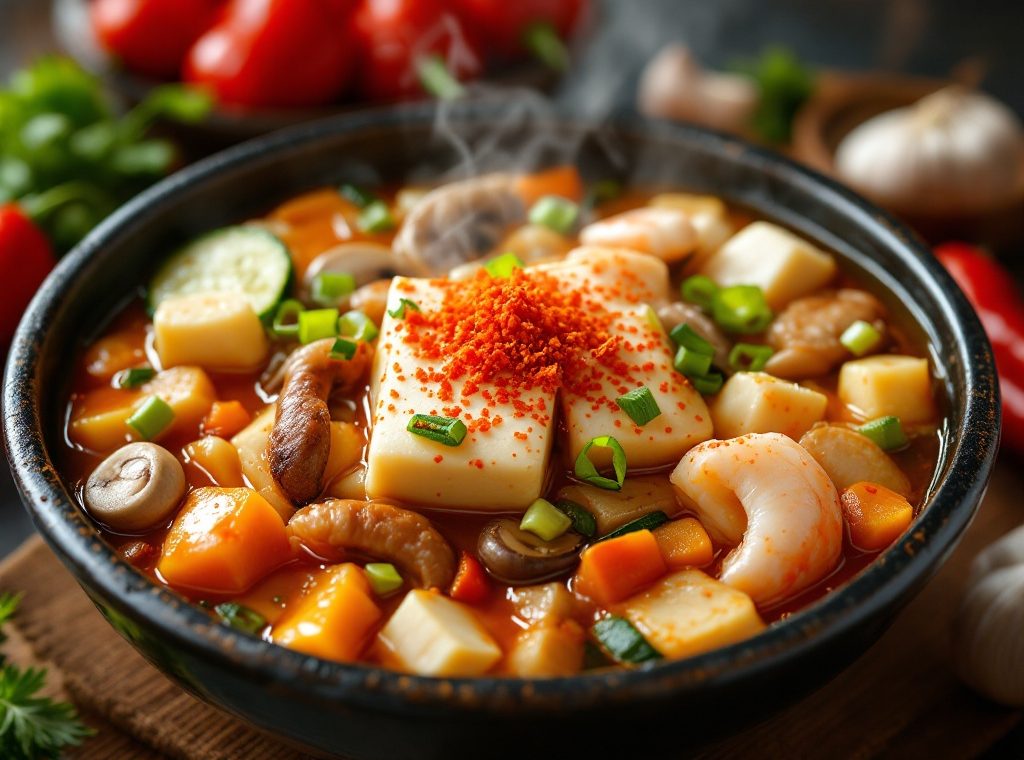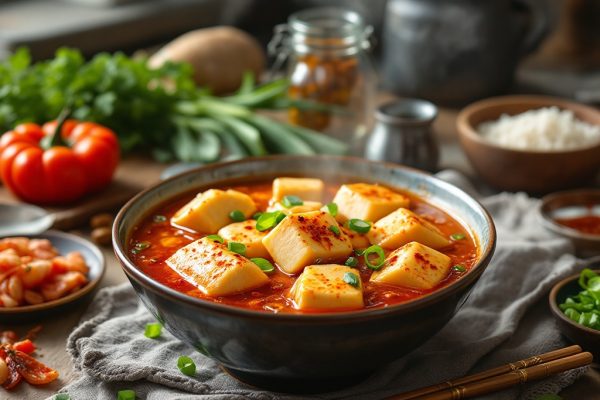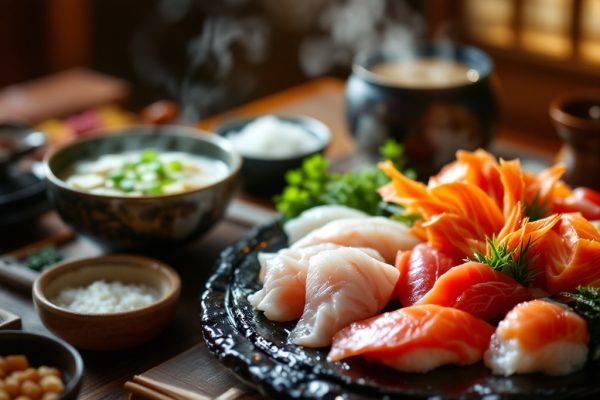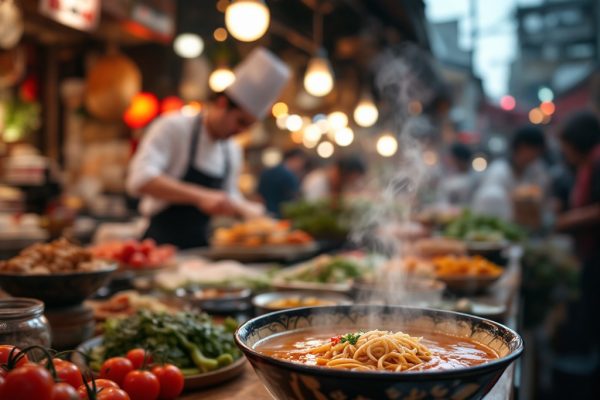How to Make Sundubu-Jjigae With Ingredients You Have at Home
Craving a flavorful and comforting Korean stew? Discover the secrets to making authentic sundubu-jjigae at home in under 15 minutes! This vibrant stew, featuring silken tofu, gochugaru (Korean chili flakes), and your choice of meat or seafood, is surprisingly easy to customize. Learn how to adjust the heat, incorporate your favorite vegetables, and achieve the perfect consistency. Explore quick cooking tips, vegetarian adaptations, and traditional serving suggestions using a ttukbaegi (Korean earthenware pot). Dive in and create a delicious, personalized sundubu-jjigae experience today!
Important information
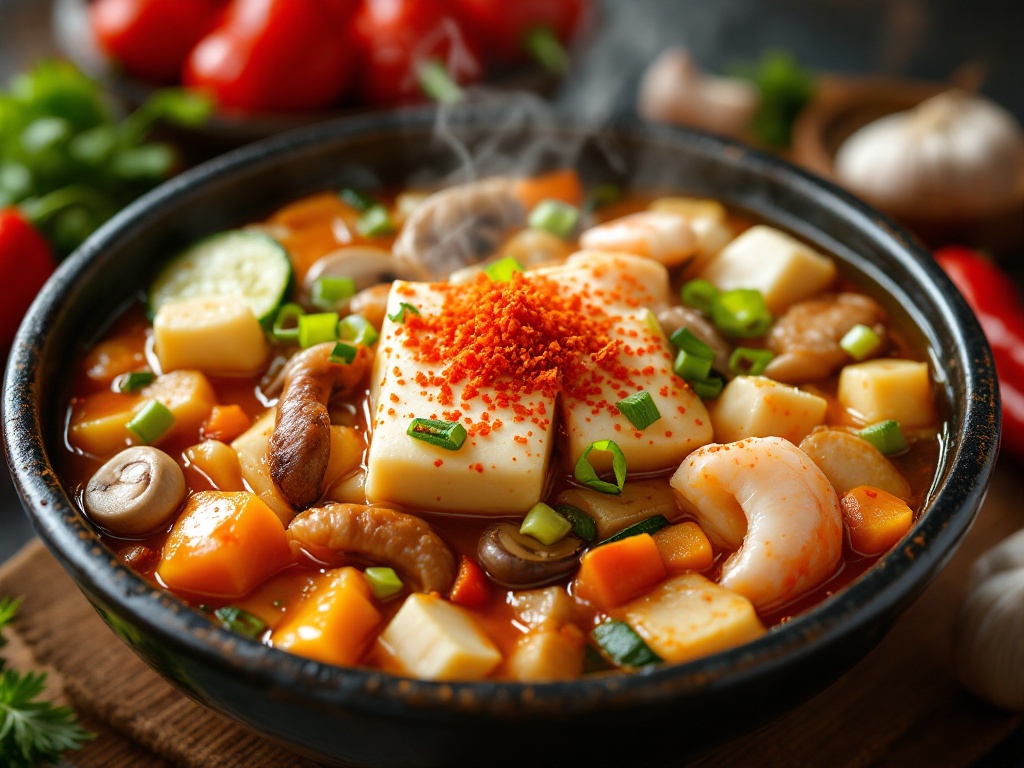
- Silken tofu is essential for sundubu-jjigae, providing its creamy texture.
- Gochugaru (Korean chili flakes) provides the stew’s signature heat, which you can adjust to your preference.
- The broth can be anchovy kelp stock, dashi, water, or vegetable broth.
- Common additions include meat (beef, pork), seafood (shrimp, clams), or vegetables (mushrooms, zucchini).
- A raw egg, spring onions, and sesame oil are often used as garnishes.
Ingredients for Making Sundubu-Jjigae at Home
Soft tofu is essential for Sundubu-Jjigae, along with a variety of vegetables like zucchini, mushrooms, and onions. Boost the flavor with your preferred protein: seafood, meat, or eggs all make excellent additions. Key seasonings include soy sauce, sesame oil, and chili paste. The stew simmers in either broth (vegetable or chicken for a richer taste) or water. Gochugaru, Korean chili flakes, provides the characteristic heat, but feel free to adjust the amount to your spice preference. Garlic, anchovy kelp stock, or fish sauce can further enhance the flavor, and experimenting with different vegetables is always encouraged.
Key Ingredients: Silken Tofu and Anchovy Kelp Stock
Silken tofu is essential for sundubu-jjigae, giving the stew its signature soft, custard-like texture. The rich, flavorful base of this traditional dish comes from anchovy kelp stock, adding incredible depth.
Flavor Enhancers: Gochugaru, Fish Sauce, and Soy Sauce
Gochugaru, fish sauce, and soy sauce are the key ingredients that make up the delicious flavor base of sundubu-jjigae. Gochugaru brings the heat and gives the dish its vibrant red color, while fish sauce adds a rich umami depth. Soy sauce balances the flavors with its saltiness and savory notes. If you don’t have gochugaru, you can substitute it with crushed red pepper flakes for a similar level of heat, or paprika for a milder flavor.
Optional Additions: Meat, Vegetables, and Seafood
Elevate your meals with protein powerhouses like beef, pork, or seafood. Dive into the ocean’s bounty with choices such as shrimp, clams, mussels, and oysters. Boost flavor and nutrition with a variety of vegetables, such as mushrooms, spinach, zucchini, onions, garlic, and green onions, which are delicious additions to any recipe.
Cooking Techniques and Equipment
Sundubu jjigae is traditionally cooked and served bubbling hot in a ttukbaegi, a Korean earthenware pot known for its excellent heat retention. This allows the stew to simmer at the table, deepening its flavor and creating a distinctive dining experience. No ttukbaegi? No problem! A standard pot or Dutch oven will do the trick. Anchovy kelp stock is ideal, but water or broth can easily be substituted. Simply simmer all the ingredients until the stew thickens to your liking.
Using a Korean Earthenware Bowl for Authenticity
The Korean earthenware bowl, known as a “ttukbaegi,” elevates sundubu jjigae by adding authentic flavor and keeping the stew piping hot. It allows it to simmer right at your table for an enhanced dining experience.
Alternatives to Anchovy Stock: Using Water or Broth
Lacking anchovy stock? No problem! Water or vegetable broth are excellent substitutes, yielding a milder, less fishy flavor.
Cooking Process: Achieving the Perfect Stew Consistency
Silken tofu, simmering in the flavorful broth, thickens the stew and releases the savory essence of gochugaru and vegetables. This creates a rich, harmonious, and delicious blend.
How to Make Sundubu-Jjigae with Ingredients You Have at Home
Whip up a delicious and satisfying sundubu-jjigae in under 15 minutes! This Korean stew is quick, easy, and adaptable to your preferences. Start with soft tofu and your favorite vegetables, such as zucchini, mushrooms, or spinach. For the broth, use water or vegetable stock.Next, add gochugaru (Korean chili flakes) for a kick of heat. If you don’t have gochugaru, feel free to substitute other chili powders or sauces. Boost the protein with your choice of pork, shrimp, leftover meat, chicken, or beef.Sauté the vegetables and meat in a pot before adding your chosen broth. Simmer briefly, then gently add the soft tofu. Cook for a few more minutes, and your sundubu-jjigae is ready to enjoy!
Step-by-Step Cooking Instructions
Heat oil in a pot and sauté minced garlic until fragrant, creating a flavorful base for your stew.
If using meat or seafood, brown it thoroughly.
Add your favorite vegetables, such as mushrooms, onions, and zucchini, and sauté until slightly softened.
Pour in water or broth, along with gochugaru and soy sauce for a savory kick.
Bring to a boil, then gently add cubed soft tofu.
Simmer for a few minutes to meld the flavors.
Just before serving, crack an egg into the stew.
Enjoy.
Quick Cooking Tips for a 15-Minute Meal
Speed up your weeknight meals with pre-chopped vegetables, pre-cooked meat or tofu, and readily available sauces. For an even faster meal, pre-made anchovy kelp stock significantly reduces cooking time.
Quickly sauté garlic and ginger in a hot pan.
Add the stock, tofu, and other ingredients, bringing the mixture to a boil.
Simmer briefly.
Garnish with green onions.
Finish with a drizzle of sesame oil for a delicious and effortless meal.
Adapting the Recipe for a Vegetarian Dish
Craving a vegetarian sundubu-jjigae? Here’s how to make it:
Skip the meat and seafood. Instead, load up on your favorite veggies like spinach, mushrooms, and zucchini.
Not a fan of silken tofu? Substitute it with firm tofu or an egg.
Adjust the gochugaru. Control the spice level to your liking.
Enjoy your flavorful vegetarian sundubu-jjigae!
Customizing Your Sundubu-Jjigae
Dashi or anchovy stock provides a savory umami depth. Korean chili flakes add a kick, adjustable to your spice preference. Garnish with fresh spring onions, a perfectly cooked egg, and a drizzle of sesame oil for the finishing touch.
Adding Umami with Dashi Stock or Anchovy Stock
Craving a richer umami depth in your sundubu jjigae? Consider using dashi or anchovy stock. Anchovy stock delivers a savory, briny punch, while dashi provides a more nuanced umami experience derived from kombu kelp and bonito flakes.
Adjusting the Heat Level with Korean Red Chili Flakes
Korean chili flakes, gochugaru, are key to controlling the spice level of your sundubu-jjigae. Add generously for a fiery kick, or use sparingly for a milder flavor. Adjust to your preference as you cook.
Toppings and Garnishes: Spring Onions, Egg, and Sesame Oil
Sundubu jjigae is often garnished with a few key toppings that enhance both its flavor and visual appeal. These typically include spring onions for a fresh, oniony bite, a raw egg stirred in at the end for creamy richness, and a drizzle of sesame oil for a nutty aroma and flavor.

